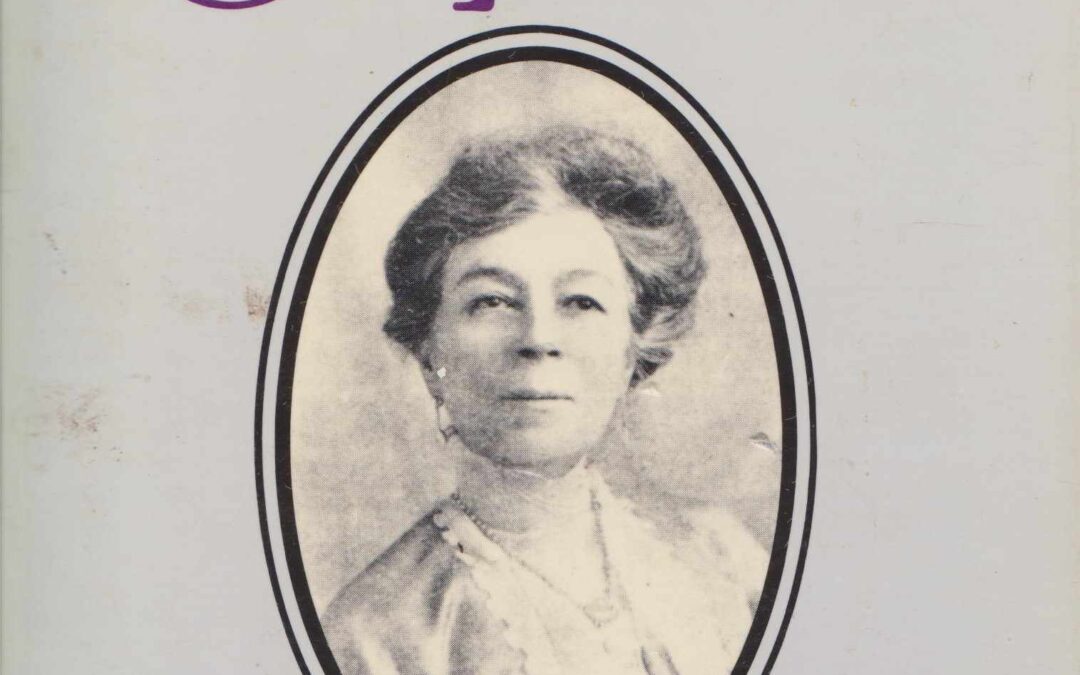by Bill Holloway
 The intense isolation and fear that Baynton felt, alone in the bush in the outback as a young mother, is reflected in all her (relatively few) stories, her bleaker view a counterpoint to the mostly male Bulletin school with all its mateship and good cheer in adversity.
The intense isolation and fear that Baynton felt, alone in the bush in the outback as a young mother, is reflected in all her (relatively few) stories, her bleaker view a counterpoint to the mostly male Bulletin school with all its mateship and good cheer in adversity.
Barbara Baynton (1857-1929) began working as a governess in outback NSW in 1875. In 1880 she married Alex Frater, older brother to some of her charges, and they took up a largely uncleared property near Coonamble in western NSW. Frater was often away, droving or drinking, leaving her partially blind, isolated, with her children and the property to manage, and prey to passing travellers.
By 1907 when Human Toll, her only novel (or novella, it’s 180 pp), was published, Baynton was a widow, living in London (see last week’s Barbara Baynton). AG Stephens was not available to provide advice or editing as he was for Bush Studies (1902), her earlier collection of short short stories, which I think had all appeared in the Bulletin during the previous decade, and this might account for the structure of the story being relatively difficult to follow, although individual passages are excellent.
 Human Toll commences with a little girl, variously Lovey, Ursie and Ursula, already motherless, coming to terms with the death of her father. She is on a remote, semi-arid sheep property in the care of her father’s mate Boshy and an Aboriginal couple Nungi and Queeby. Boshy wishes to continue as the girl’s guardian but their nearest neighbour, Cameron and his daughter Margaret come and take her (and all the father’s papers). Ursula is sent to Cameron’s sister, a widow in a small country town, who also has the care of Cameron’s son Andrew, a few years older than Ursula, to attend school.
Human Toll commences with a little girl, variously Lovey, Ursie and Ursula, already motherless, coming to terms with the death of her father. She is on a remote, semi-arid sheep property in the care of her father’s mate Boshy and an Aboriginal couple Nungi and Queeby. Boshy wishes to continue as the girl’s guardian but their nearest neighbour, Cameron and his daughter Margaret come and take her (and all the father’s papers). Ursula is sent to Cameron’s sister, a widow in a small country town, who also has the care of Cameron’s son Andrew, a few years older than Ursula, to attend school.
The widow marries a grasping Presbyterian preacher, Mr Civil. Andrew often has to stand between Civil and Ursula when the former is handing out punishments. Boshy sometimes comes to town and later provides the money for Ursula to attend boarding school. Mrs Civil dies and Civil becomes ‘nicer’ to Ursula when he thinks she might inherit her father’s property (which Cameron seems to have taken over), or Boshy’s mysterious “fortune”.
Spoilers: It all comes to a head at a town dance when Andrew ignores Ursula, gets drunk, and in the morning is found to have “married” Ursula’s friend, Mina. Mina is thrown out of home and Andrew and Palmer, his brother in law, take the two girls back to the original property (where Nungi now has a new and less amenable wife). There the two young woman – with no love at all lost between them – are abandoned; Nungi refuses to continue seeing to the sheep; his new wife is of little assistance around the house; Mina has a baby which she attempts to kill; Ursula runs off with the baby and becomes hopelessly lost in the bush.
Human Toll makes clear – by contrast – how much Australian fiction is written with a niceness, a middle class sensibility, that underplays people’s essential selfishness. Ursula is your ordinary moral, right-thinking heroine but all the supporting cast are nasty and brutish. Cameron apparently steals Ursula’s property; the preacher lives off the money Cameron pays for Ursula’s support, and later enters her bedroom:
He advanced to her, misled by her passiveness. She aimed a heavy blow at his leering face with the candlestick, but he dodged it, and, terrified of a noisy scene, he rushed to his room.
The townspeople are all at each other’s throats, though at least at the dance, they enjoyed themselves:
Then Neddy Neale, dragging his dazed partner, swished past where Palmer and Ursula stood. Gus Stein, with Pat the Jew’s daughter and Andrew with Mina, still kept the floor, but now the rat-tat-tat accompaniment knuckled from the bottom of a tin dish by Dave Heeley, Neale’s drover mate, till, tired out, even he ceased.
Then the dancing husband of the singer, importuned, momentarily disengaged his partner to grab his concertina, and with this resting on the girl’s back, he kept the dancers going, till he, though much encouraged, wearied. Dry-throated and panting, some of the wine-maddened performers tried to hoarsely bellow independent tunes, which in turn yielded to impotent yells.
The one great difficulty is that throughout, all speech is rendered as dialect, and between a childish Ursie, the Aussies, Aboriginals and the Germans, this is often quite hard to follow.
The novel ends with an astonishing tour de force, a stream of consciousness, over 20 or so pages, as Ursula struggles, increasingly crazed by thirst, disoriented and incoherent, through the bush:
What a most peculiar thing that was, the leaning tree which earlier she had passed – oh, surely long ago – days and weeks ago; and why did she pass it? Why? she wondered, and her enfeebled mind rested in this futile query. Oh – screaming – she knew why. She was lost in the Bush, and, as long ago she called, “Andree, Andree!” Now, now, she was growing like a child. A child! Worse, for when a child she had conquered herself …
Below, I have reproduced extracts from a review that originally appeared in the (London) Bookman, a trade publication, in 1907. Edward Garnett (1868-1937), the author, was a writer, reader and editor who worked variously with Joseph Conrad, Ford Maddox Ford, DH Lawrence and TE Lawrence. He knew Australian writing well enough to champion Henry Lawson, and he puts Baynton in exalted company.
Barbara Baynton
Human Toll
first pub. 1907
republished in Sally Krimmer & Alan Lawson eds, Barbara Baynton, UQP, Brisbane, 1980
Bill Holloway, the author of this review, blogs at The Australian Legend. He is an old white guy the subject of whose (very) mature age M.Litt thesis was ‘The Independent Woman in Australian Literature’.






High praise indeed! What a shame Baynton didn’t have a skilful editor to work with her and pull the material together.
The bigger shame in my opinion is that Baynton (apparently) did not keep writing. The elements of Modernism in this work are innovative and make you wonder what her influences were – in ‘faraway’ Australia, at the beginning of the twentieth century.
Some of the criticisms of Human Toll are simply a failure to appreciate that Baynton was telling a relatively linear story but by showing only elements of it.
That is a glowing review!
FYI: Garnett was married to Constance Garnett, the well-known translator of Russian literature.
Thanks Bron. I didn’t know of Garnett before putting this together, nor his wife. Up until I started reading lit.blogs I don’t think I ever thought about translators.